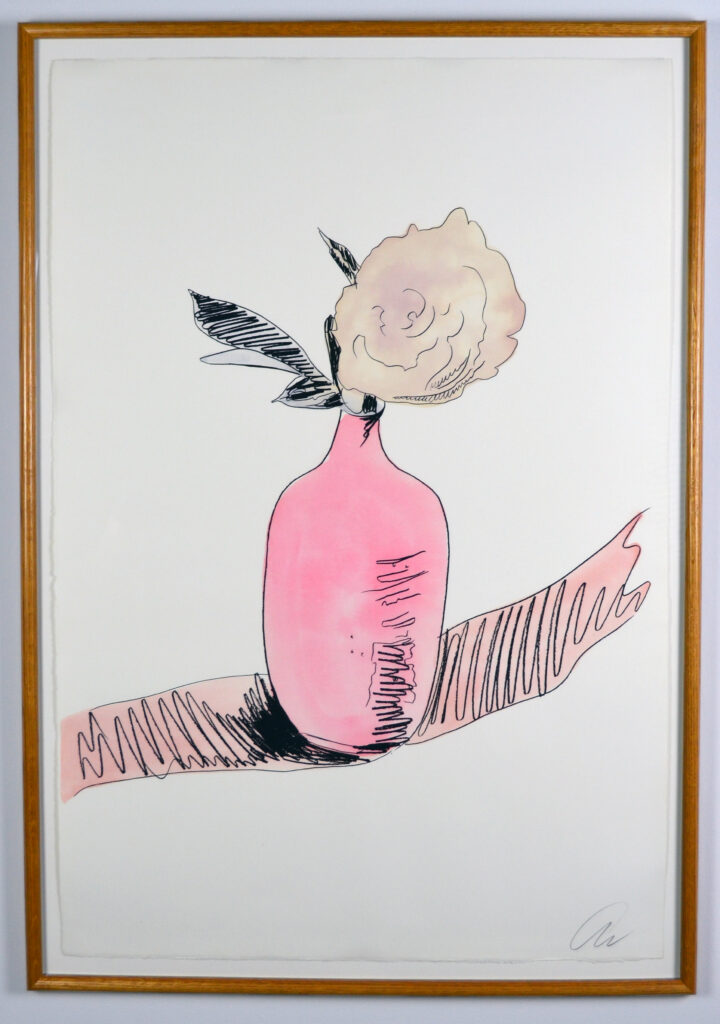Best known for spearheading the Pop Art Movement in America, Andy Warhol (1928-1987) is one of the foremost artists who brought screen printing into fine art spaces. While his famed Campbell’s Soup Cans (c. 1962) and portraits of Marilyn Monroe (c. 1962) became some of his most universally recognized pieces, the AMA’s Spring Exhibition explores some of his lesser-known, though equally clever, artworks.
Hand-colored Flowers (1974) is a series of 10 prints in which Warhol free-handed several flower drawings inspired by those photographed in the catalog Interpretive Flower Designs by Mrs. Raymond Russ Stoltz (A. S. Barnes & Co., Inc., 1972). Warhol had his drawings transferred onto silk screens to produce multiples, printed by Alexander Heinrici. After the screen-printing process, the artist hand-painted each of the prints with Dr. Martin’s aniline watercolor dyes.
Though the series Hand-Colored Flowers has multiple editions in numerous museums and institutions around the world, each set of 10 has the artist’s personal touch. The AMA has editions 40/250. Donated to the Albany Museum of Art in 1984, Warhol’s Flowers present part of the range of the artist’s work, as these prints in particular stray from the typical subject matter in pop culture that he is known for. Each of these works on display has an individualized nature and an alternative point of reference for the artist who usually exhibits pop culture and commercial forms in his work.




